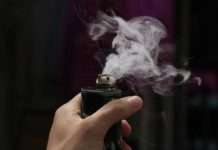- Venezuela, once a shining star of economic prosperity in Latin America, continues its plummet into chaos — a cauldron of human suffering in which the environment is also a victim.
- This month’s nationwide blackout, according to eyewitness accounts, saw courageous Venezuelans coming together to help each other as their government failed to respond effectively. It was the nation’s most recent crisis, though likely not its last.
- News reports from inside the country remain sketchy. But with the lights back on, his Internet connection restored, Venezuelan contributor Jeanfreddy Gutiérrez Torres offers Mongabay readers an exclusive firsthand account of Venezuela’s days of darkness.
On the fifth day of the longest nationwide electrical blackout in Venezuelan history, an estimated 20 million people were without water because the public infrastructure had stopped working.
In Guanare, the capital of Portuguesa state, thousands of people threw themselves into a local river to bathe, and brought containers from home to stock up on water. In the town of El Limón, in Aragua state, residents blocked access to neighboring Henri Pittier National Park because flocks of thirsty citizens had dried up a river almost entirely in their desperate search for water and damaged water distribution pipes.
After the Army took control of springs in the El Ávila National Park in Caracas, thousands of people gathered on the banks of the polluted Guaire River to open water distribution pipes that experts warned were unacceptable for human use. That scene was repeated in the states of Aragua and Carabobo at freshwater reservoirs. Police intervention was required to prevent the illegal tapping of numerous water pipes.

Chronic water problems
Drinking water shortages have become increasingly common in Venezuela, once one of Latin America’s most advanced and wealthy nations, now considered by many to be a failed state. According to a 2017 report by the Ministry of Ecosocialism, regular maintenance of reservoirs has not been carried out, water treatment plants are not being kept repaired, and watersheds are not being reforested. A survey by the environmental NGO Coalición Clima21 shows that 72 percent of people in Caracas have experienced poor water service from the government.
As a result, water purification has been privatized in urban areas. In many communities, an enterprising citizen will install a private purification plant, then sell water to neighbors. Companies and the wealthy pay for water tanks with which to supply themselves. It is common now for water to be stored in any possible receptacle, in every Venezuelan home.
Similarly, urban deforestation due to a lack of reliable natural gas supplies has worsened. Many households that once opted for electric stoves in order to avoid long lines for bottled gas, were, during the blackout, without a means of cooking. But even before that, hundreds of urban trees were mutilated in squares, parks and along streets to provide wood for cooking. Law enforcement takes little to no action against such cutting.
Animals suffered during the blackout too, though reports are few from zoos, where animals have been hunted for food in the recent past. In Mérida, eight amphibians belonging to three endangered species died due to an uncontrollable rise in temperature at the Rescate de Especies Venezolanas de Anfibios Amenazados conservation facility. Biologist and REVA head Enrique La Marca reported that the center went 111 hours without electricity. During that time captive members of several endemic frog species died, including five individuals of ranita of Mucuchíes (Aromobates zippeli); two ranita del Teleférico (Pristimantis telefericus); plus one Hyloscirtus genus individual of an undetermined species.

Then the darkness came
When the nation’s electricity first failed on Thursday, March 7, around 5pm, many sighed with annoyance but had little fear. Such outages have become the new normal, and at first Venezuelan routines barely changed. Typically in the past, such power lapses lasted only a few hours. Since 2007, blackouts affecting up to 80 percent of the country have increased, though have always been remedied in less than 24 hours. Failures of two or three days have become frequent but only in certain states, such as Zulia and .
So people were ready, or so they imagined. Expecting short local blackouts, everyone keeps computers and cell phones plugged in and fully charged at all times. Telecommunications companies and banks all have gasoline generators or other forms of power backup, as do many medical clinics, malls, hotels, and even small shops and homes, so phone calls, social media and check cashing can go on operating through short outages.
However, as word spread that the entire nation was without power, a new fear arose. With the passage of more time, there were no TV or radio stations on the air, no cellphone service, no Internet. Accurate news, rumors and disinformation were all spread by word-of-mouth.
The March 7 blackout encompassed all 23 Venezuelan states and Caracas, the nation’s capital.

Advance warning
Total darkness came for the country a week after the electrical workers union warned that Venezuela’s power grid was being so poorly maintained that it could suffer a massive failure at any moment, an outage that would extend for days because there wouldn’t be enough staff to solve such a massive failure – 24,000 specialized engineers and technicians of the 50,000 who staff the electrical grid have fled the failing country since the economic crisis began a few years ago.
Venezuela’s energy sector has been plagued for years by hundreds of millions of dollars in corruption, managerial inefficiency, and equipment obsolescence. Just a day before the massive outage, renowned journalist Nelson Bocaranda denounced the government, saying it was preparing an “information blackout” with Cuban and Russian help, in order to leave the population incommunicado as a measure of social control. This report has not since been confirmed.
During the blackout’s first 24 hours, many agreed with Bocaranda, that it had been induced by the Maduro government to demoralize the population. Just days before, Juan Guaidó, president of the National Assembly and recognized by 50 countries as Venezuela’s legitimate head of state, had returned to the nation despite arrest threats by President Maduro. Guaidó’s entrance through the main airport, and a speech in the center of Caracas, resulted in a wave of national fury and hope. The 35-year-old engineer asked the nation to go out into the streets to protest on Saturday, March 9.
The official version explaining the blackout’s cause was as little believed by most people as past explanations; a decade ago major outages were blamed on wildlife – an iguana biting through a high-voltage cable, or on vulture feces deposited on a transmission tower. This time the claimed cause was sabotage, with a supposed “cyberattack” or “electric coup d’état” affecting the nation’s key hydroelectric facility, the Guri Dam on the Caroní River in the Amazon, responsible for generating 80 percent of Venezuela’s electric power.
The Minister of Communication and Information, Jorge Rodríguez, declared on the evening of Thursday March 7, that electricity had been restored to 70 percent of the nation’s territory, and that the Maduro government had thwarted the electric coup d’état conspiracy. However, almost nobody could see or hear this report, as they still lacked electricity.
NASA satellite pictures, used to monitor forest fires, showed fires affecting the San Gerónimo substation, which connects three hydropower plants in southern Venezuela with the rest of the country. The fires there were first detected on March 6, one day before the blackout began, and continued until March 8, when the government announced the blaze was fully controlled.
Netblocks, an organization that monitors the functioning of the Internet around the world, reported that its map of Venezuala’s connectivity showed the biggest Internet blackout in Latin America ever seen. Ninety percent of the country was offline.

What I experienced
Personally, during the blackout, I was able to recharge my cellphone using my car. Through heavy interference I was then barely able to pick up one well-known youth radio station, which had transformed its programming to receive and distribute live text messages and WhatsApp calls from people who wanted their families to know they were safe.
Touring the city of Maracay, this is what I saw: very long lines of people at gas stations peacefully trying to get fuel for generators and cars, and at ice factories as they sought ways to preserve food and vital medicines like insulin.
Several food stores gave away meat, as they feared their stocks would only rot. According to Fedenaga, the main agro-producer federation, during the blackout five millions liters of milk, 2 million kilos of meat in slaughterhouses and markets, and 1 million kilos of cheese were spoiled, totaling more than $5.6 million dollars in losses.
For WhatsApp groups, where many participants are Venezuelan expatriates, fear spread. They found it nearly impossible to learn anything about the health and wellbeing of relatives, as it was impossible to phone Venezuela during the outages. The few who had electric service in the country offered to help, passing messages from residents to relatives abroad as best they could.
Another problem during the blackout was money. Without electricity, a working bank platform or enough Venezuelan cash, a solution had to be found. By February, only six percent of available cash on the streets came in the form of Venezuelan banknotes, according to the Central Bank of Venezuela. At the official exchange rate of Bs. 3,300 per dollar, that meant that all of the Venezuelan currency combined and available to a populace of 28 million came to a mere 45 million dollars. This corresponds to 1.6 dollars per person. Under those circumstances, the only solution was to use U.S. currency.
With hyperinflation at an astounding 1.7 million percent during 2018, U.S. dollars have become popular in Venezuela for the purchase and sale of goods, by those seeking to emigrate from the country, and as a form of savings for those who stay. U.S. currency was especially on demand during the blackout.

The power outages dragged on
Electricity returned on Friday, March 8 to Palo Negro, where an important military airbase is located in the northwestern state of Aragua. Eight hours later it returned to the nearby city of Maracay, capital of Aragua state and 120 kilometers (75 miles) from Caracas. But the rest of the country remained mostly in the dark.
On Saturday, March 9, at 11am, there was a second national blackout. This one was worse, with 96 percent of the country left without power. A fire at a Puerto Órdaz substation, in southern Venezuela near the Guri dam, was said to be responsible.
Of major concern was the country’s public health system. Half the nation’s hospitals did not have auxiliary power, or their backups had been damaged, nor did they have water. It was feared that thousands of kidney patients would die from lack of dialysis. Maternity wards and emergency rooms, and even private clinics, began to reject patients. In one case, a 19-year-old girl, weighing only 10 kilos (42 pounds) due to malnutrition (much of the nation is underweight due to the deepening economic crisis), died because she could not be treated, for lack of electricity.
Monitoring Netblocks, I could see the daily peaks in electrical restoration, and subsequent failures, as testified by working Internet service. Up until Tuesday, March 12, no more than 40 percent of the country was connected; some areas had by then gone nearly five days without power. As a result, many families had seen their meager food supplies spoil.

In the midst of despair, rage arose. Dozens of spontaneous protests were sparked across the country and answered with gunfire and teargas by law enforcement and paramilitary groups. Looting was reported in at least 12 states.
The worst civil unrest appears to have occurred in Maracaibo, a coastal city, capital of Zulia state and at the heart of Venezuela’s oil production, and environmental degradation. More than 500 stores were sacked, 43 people died in hospitals during the blackout and many more were treated at emergency rooms for gunshot wounds or cuts from broken glass as the city exploded in riots and chaos. Congressman José Manuel Olivares reported that public hospitals had prevented 26 deaths associated with the blackout. But six of the deceased were newborn children.
Countrywide, the lack of electricity is reported to have caused 875 million dollars in losses. But on 22nd March, congressman Ángel Alvarado calculated a new total of 4 billion dollars. This total has yet to be confirmed.

Good Samaritans
Many took advantage of others’ troubles. Some who had power, charged a U.S. dollar just to plug in a cellphone for ten minutes, or asked for US $15 for a bag of ice, instead of one or two. Even cold water was sold on the streets at wildly inflated costs by those who had it.
But solidarity and compassion were far more evident. The well-known pharmacy network Farmatodo allowed users to charge their cell phones for free. Dozens of shopping centers opened their facilities so people could use bathrooms, charge phones and buy food safely.
Anonymous heroes multiplied. Neighbors helped an elderly lady in a wheelchair climb 15 floors to reach her apartment; a carwash decided to provide its water free to citizens; pharmacies in Barquisimeto offered to refrigerate medicines, and in Cabudare, neighbors drove about sourcing water, power and food for those who most desperately needed it. An ice cream factory, unable to keep its merchandise cold, distributed it free to surrounding communities bringing a little happiness in the darkness.
Official measures were less forthcoming. Government-controlled media offered no information regarding hospitals with electricity, or water distribution trucks, but did provide a steady stream of reports praising the government. In a press conference, Defense Minister Vladimir Padrino López declared that, “fortunately in the first 72 hours [of the blackout] there is nothing to report.” By then President Maduro had clarifed the official version explaining the outage: he alleged that an electromagnetic ray originating in Houston and Chicago was used to disable Venezuela’s electrical grid.
For most Venezuelans, the suffering brought by the blackout was not new, but rather an extreme intensification. Water is not being properly purified or pumped; garbage piles up in the streets; power outages are random and frequent. The mega-blackout was just the most recent injury added to years of insult. Many fear worse to come.
FEEDBACK: Use this form to send a message to the author of this post. If you want to post a public comment, you can do that at the bottom of the page.

This story first appeared on Mongabay
South Africa Today – Environment
This article is licensed under a Creative Commons Attribution-NoDerivatives 4.0 International License.
You may republish this article, so long as you credit the authors and Mongabay, and do not change the text. Please include a link back to the original article.












